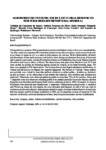Por favor, use este identificador para citar o enlazar este ítem:
http://www.alice.cnptia.embrapa.br/alice/handle/doc/1036781Registro completo de metadatos
| Campo DC | Valor | Lengua/Idioma |
|---|---|---|
| dc.contributor.author | SOUZA, V. C. | pt_BR |
| dc.contributor.author | SILVA, A. P. da | pt_BR |
| dc.contributor.author | MALAGODI-BRAGA, K. S. | pt_BR |
| dc.contributor.author | CAMARGO, R. C. R. de | pt_BR |
| dc.contributor.author | CANUTO, J. C. | pt_BR |
| dc.contributor.author | QUEIROGA, J. L. de | pt_BR |
| dc.contributor.author | MORICONI, W. | pt_BR |
| dc.date.accessioned | 2016-02-12T11:11:11Z | pt_BR |
| dc.date.available | 2016-02-12T11:11:11Z | pt_BR |
| dc.date.created | 2016-02-12 | pt_BR |
| dc.date.issued | 2015 | pt_BR |
| dc.identifier.citation | In: ENCONTRO SOBRE ABELHAS, 11., 2015, Ribeirão Preto. Anais... Ribeirão Preto: FAPESP; USP, 2015. | pt_BR |
| dc.identifier.uri | http://www.alice.cnptia.embrapa.br/alice/handle/doc/1036781 | pt_BR |
| dc.description | The agroforestry systems (AFS) are productive systems with high diversity with a view to sustainability. This study, conducted in Jaguariúna-SP, evaluated the potential of some native tree species, used to increase the diversity or as a source of income on AFS as a source of floral resources for wild bees. Direct observations, diversity and abundance of bees and resources exploited by them during simultaneous flowering of three tree native species were made: Aroeira Pimenteira (Schinus terebinthifolius), Escova de Macaco (Apeiba tibourbou) and Urucum (Bixa orellana). The observations took place from March to June 2015 and were carried out during the flowering period, except for Aroeira, in the final flowering stage. 359 bees were sampled in 309 observations. The Urucum flowers had higher abundance and diversity of visitors and the Escova de Macaco the opposite happened. The flowers of Urucum, whose anthers are poricidal were visited by bees that perform vibration to collect pollen - Bombus sp, Epicharis sp and sp Oxaea - as by others that do not exhibit this behavior, Apis mellifera and Tetragonisca angustula. These bees were observed gathering pollen in more than 70% of the samples. Oxaea and T. angustula were also observed collecting pollen from anthers poricidal Escova de Macaco, the first being the most abundant and frequent floral visitors, collecting pollen in 100% of samples. In Aroeira Pimenteira were observed only smaller bees: T. angustula, Nannotrigona testaceicornis, A. mellifera and Plebeia sp, being the first species the most abundant and frequent. In half of the bee visits in Aroeira no pollen was collected, indicating an attractive supply of nectar in these flowers. It concludes that tree species used for biomass production in AFS, can be important sources of resources for the recovery of diversity and local abundance of bees, improving the ecosystem service of pollination. | pt_BR |
| dc.language.iso | eng | eng |
| dc.rights | openAccess | eng |
| dc.subject | Apeiba tibourbou | pt_BR |
| dc.title | Agroforestry systems: source of floral resources for wild bees (Hymenoptera: Apoidea). | pt_BR |
| dc.type | Resumo em anais e proceedings | pt_BR |
| dc.date.updated | 2017-07-10T11:11:11Z | pt_BR |
| dc.subject.thesagro | Bixa Orellana | pt_BR |
| dc.subject.nalthesaurus | Pollen | pt_BR |
| dc.subject.nalthesaurus | Foraging | pt_BR |
| dc.subject.nalthesaurus | Schinus terebinthifolia | pt_BR |
| dc.subject.nalthesaurus | Agroforestry | pt_BR |
| dc.format.extent2 | 238 | pt_BR |
| riaa.ainfo.id | 1036781 | pt_BR |
| riaa.ainfo.lastupdate | 2017-07-10 | pt_BR |
| dc.contributor.institution | V. C. SOUZA, UNIP-Campinas; A. P. da SILVA, PUC-Campinas; KATIA SAMPAIO MALAGOLI BRAGA, CNPMA; RICARDO COSTA RODRIGUES DE CAMARGO, CPAMN; JOAO CARLOS CANUTO, CNPMA; JOEL LEANDRO DE QUEIROGA, CNPMA; WALDEMORE MORICONI, CNPMA. | pt_BR |
| Aparece en las colecciones: | Resumo em anais de congresso (CNPMA)  | |
Ficheros en este ítem:
| Fichero | Descripción | Tamaño | Formato | |
|---|---|---|---|---|
| 2015RA083.pdf | 670,64 kB | Adobe PDF |  Visualizar/Abrir |









